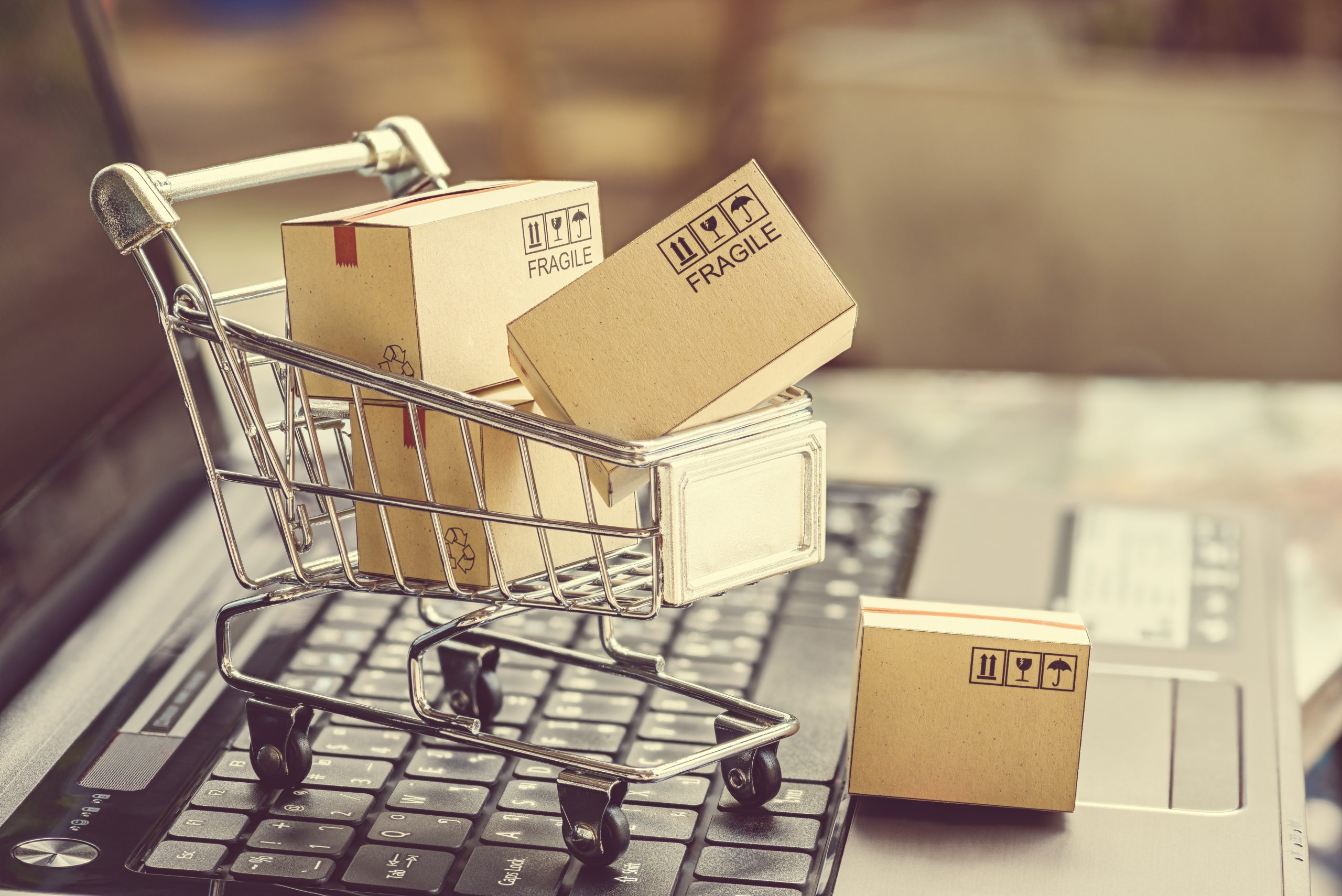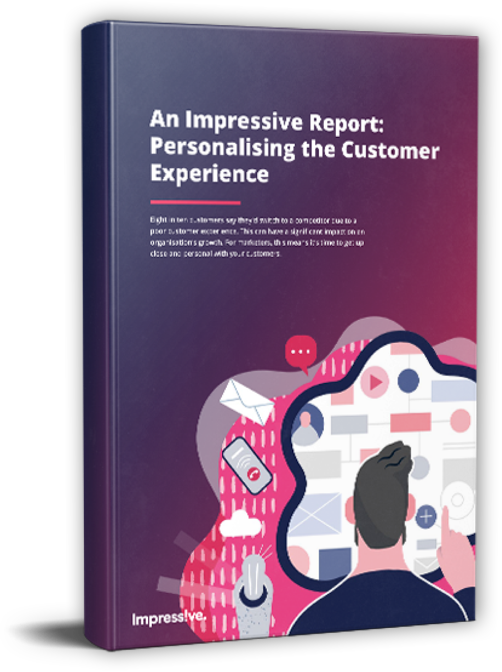When Amazon CEO Jeff Bezos was first sourcing talent, he was looking for people to “help pioneer commerce on the Internet”. This was back in 1994, when it was still Internet with a capital ‘I’. Fast-forward to 2019, and Amazon is now the largest internet company by revenue in the world, synonymous with eCommerce and innovation.
Starting out as an online bookstore, they quickly diversified to sell video and music downloads and streaming, as well as audiobook downloads and streaming, video games and other software. Following this, they moved into other products, such as electronics, apparel, furniture, homewares, food, toys, jewellery and more.
Today, 100 million people subscribe to their loyalty program, Amazon Prime. How did they do it?
Great marketing, obviously.
But it’s more than that. They don’t just market for the sake of marketing; they choose strategies that align with, and help them achieve, their business goals. This has led to their unprecedented success, with 53% of the United States’ eCommerce growth in 2016 due to Amazon. Who wouldn’t want a piece of that? Keep reading to find out more about their tactics and how you can use them to your own advantage.
First & foremost: customer focus
Every business these days says they’re customer focused, but very few actually embody what that means successfully. It’s more than just giving your customers what they want – it’s about creating solutions, sometimes for problems they didn’t even know they had.

Yeah…don’t do this if you want your customers to keep coming back.
Amazon achieves this by ensuring any new products or services they propose are delivered to shareholders and stakeholders in the form of an internal press release. This document cohesively explains the problem they’re solving, allowing everyone to understand the true value that could be realised. If the problem can’t be explained in the press release, it’s likely the product won’t be worthwhile.
This strategy has allowed Amazon to be incredibly innovative. Over the years, they’ve been at the forefront of new technology and new ideas, such as Prime, Marketplace, Echo, Go, content subscriptions and more.
Of course, innovative ideas are one thing, but the next step is great execution of those ideas. The products and services have to be delivered well, which is why Amazon has built such great vendor relationships (shipping, streaming and publishing partners alike), that allow them to offer customers more value for money.
User experience
Arguably, all of the following points we’ll make below tie in with the first. The customer is always at the centre of everything Amazon does, and UX is no exception.
As we know, SEO is an important marketing component for eCommerce, and Amazon doesn’t play around. Each of the product pages offer long-form content, detailing the item with keyword-rich copy to help increase its visibility for both Google and their own internal search engine. But it’s not just content placed at the bottom of the page, for no one to read but algorithms. It provides valuable, consumable information about the item, which is honestly far more powerful than some keywords anyway.
Once you’ve completed your purchase, the positive user experience continues. They’ve developed a range of helpful tools to track packages and easily arrange returns. If anything does go wrong, their customer service team is ready to assist you across a range of platforms, including social media.
Customer reviews
Amazon was one of the first companies to include a review system on their website, way back in 1995. Given research shows that 86% of consumers read online reviews and over 90% trust them as much as personal recommendations, it’s clear why they’re so valuable. Not only does it provide data on what products and suppliers Amazon should continue to work with, it gives other customers the confidence they need to complete check out.
Of course, for innovative Amazon, adding customer reviews was only step one. Later, they incorporated a simple question to their review platform: “Was this review helpful?”, which helped to increase their revenue by $2.7 billion.

The real question is, who are the 14% who don’t read reviews??
So how do they get people to review? Surprisingly, they don’t incentivise them; they simply send a reminder email about the products you’ve recently purchased. Even if you bought multiple items at one time, you’ll receive separate emails to review each product. By highlighting the individual items, this encourages customers to really consider their purchase, making them more likely to leave a review.
That being said, leaving a review on Amazon is a relatively common practice due to the company’s longevity. If you’re starting out and looking to encourage them on your own ecommerce website, we suggest incentivising them in some way. A small discount on their next purchase would do the trick – and also encourage repeat business.
Data, data, data
As one of the largest eCommerce platforms in the world, Amazon has a lot of data – and they’re not afraid to use it. They use a sophisticated algorithm to gather information about their customers and determine what products will appeal to you the most.
When logged in, you’ll see recommendations on each page under their “Frequently Bought Together” section. This information is based on your previous shopping behaviours, combined with information from shoppers with similar profiles. Without an account, you’ll still see recommendations, although they’ll be pulled from cookies, member profiles and general sales statistics.
Next is their email marketing. Rather than sending email blasts, they’ve developed a more refined strategy. Every opportunity to market, even within transactional emails, is taken advantage of – but it’s with relevant recommendations. These are based on your previous purchases or products you’ve recently viewed on their site. Sooner or later, they’ll show you something that appeals, and you’ll make your way through their checkout once more.
Free (and fast!) shipping & returns
Nobody likes spending money on shipping. Not customers, and not eCommerce businesses. Which is why finding a solution that works for both is vital.
Amazon have nailed it by having several options available for their customers to take advantage of free shipping. In the US, if customers spend US$25 on books or $35 on other qualified items, they’ll receive free shipping. Alternatively, they can choose a $99 per year Amazon Prime subscription to receive free two-day shipping nationwide. All orders are eligible for free returns. Of course, they’re not really “free” – in 2016 Amazon lost $7.2 billion on shipping costs – so making sure the extra purchases help their business to absorb the costs is important.
In Australia, shoppers are still yet to take up online shopping with the same zeal that Americans have. Why risk ordering something that’s not right when you can find something in store? By absorbing the expense of shipping and returns, you’re shifting the balance of the perceived risk and encouraging shoppers to complete check out.
Amazon Prime
If you’re going to create a customer loyalty program, go big or go home.
Loyalty programs have to be worth your customer’s while, otherwise what’s the point? Without naming names, we’ve seen (and maybe once or twice fallen victim to) thinly-veiled online “loyalty” programs that, upon sign up, actually feel more like a scam. What are you paying money for? What do these points even get you?

How it feels to your customers when your loyalty program isn’t on-point.
Prime is Amazon’s loyalty program, and even without buying more stuff from Amazon, it delivers exceptional value. At present, 25% of US households have a Prime account, giving them access to free video streaming, free books, discounts on popular items and free two-day shipping. They also have a special celebration each year, known as Prime Day, which offers members exclusive deals, price cuts and other promotions.
If you shop regularly on Amazon, it doesn’t make sense not to have Prime – and once you do have it, you’re much more motivated to shop, if only to make the most of your investment. And that motivation is only growing, as reports indicate Prime members spending has increased by $100 to $1400 a year, while non-Prime members has reduced by the same amount to $600 per year.
Amazon Marketplace
The eCommerce industry is oversaturated with retailers, and even with a strategy that incorporates SEO, Google Ads and Shopping, and social media, your business may still be struggling to cut through all the clamour. That’s why building partnerships with other eCommerce stores can be a useful tool to ensure your products are getting in front of customers.
If it’s good enough for Amazon, right? Amazon Marketplace is essentially the same concept. It allows anyone to sell on their website and creates huge revenue streams for them. It also incidentally helps them to compete with eBay, one of their largest competitors.
You don’t have to be a big company like Amazon hosting everyone else, either. You don’t even have to be the one jumping on a hosting site. Simply look into affiliate marketing programs or reach out to complementary businesses to start creating partnerships.
Amazon in Australia
Amazon officially launched in Australia in December 2017. While they had previously sold Kindle books and other intangibles through their Australian website before this date, it wasn’t until then that they started taking orders for physical goods to be shipped from their suburban Melbourne warehouse.
Predictions were rife upon their launch. Amazon would disrupt the market. With a country of only 24 million, and a duopoly on literally every retail industry you can think of (supermarkets, electronics, department stores, home improvement stores, even telecommunications to an extent), everything was about to change.
Over a year later, not much has changed. (Yet.)
This is perhaps because Amazon’s Australian site only has 60 million products, in comparison to the US’ 500 million. Amazon Prime Australia is also not as compelling for this reason, although the price is reduced to only AU$59 a year to make up for this.
This may also be why last year Deloitte’s 2018 Retailer’s Christmas Survey found that 83% of 30 small and large Australian retailers surveyed believed Amazon wouldn’t have an impact on their Christmas trading performance.
But Amazon are in it to win it. A company unafraid of recording net losses, they’re used to playing the long game. While it may take them years, their expansion into Australia will make its mark.
What does this mean for Aussie retailers?
The Australian eCommerce market is an area set for tremendous growth. Amazon is likely to take up a significant slice of that pie as it develops its local holdings, and will also outpace existing large brands that don’t move quickly enough. For smaller to mid-sized brands, the challenges will be great, but so will the opportunities.
By following some of Amazon’s key marketing strategies and shaping them to suit your own business, you’ll be able to carve out your own space in the growing sector. The key takeaways include:
- Stay customer focused – and actually mean it
- Use data wisely
- Take risks
- Create an omni-channel experience
- Be convenient
But translating these ideas into actionable marketing strategies and profitable campaigns take hard work, commitment, and yes, some skill. If you want to get serious about your eCommerce marketing strategy, why not work with a team that’s just as serious as you?
Get in touch with one of the Digital Strategists at Impressive to find out more. We’ll help you develop a strategy that will take advantage of what we’ve learned about Amazon and bolster your business for continued growth.






